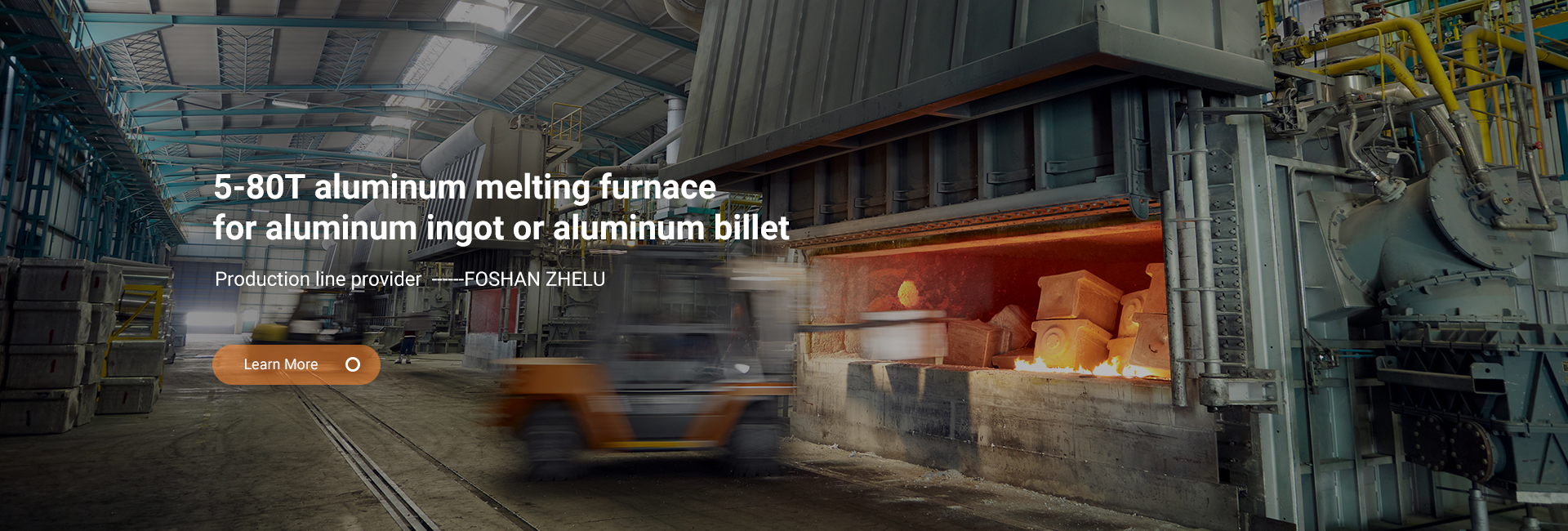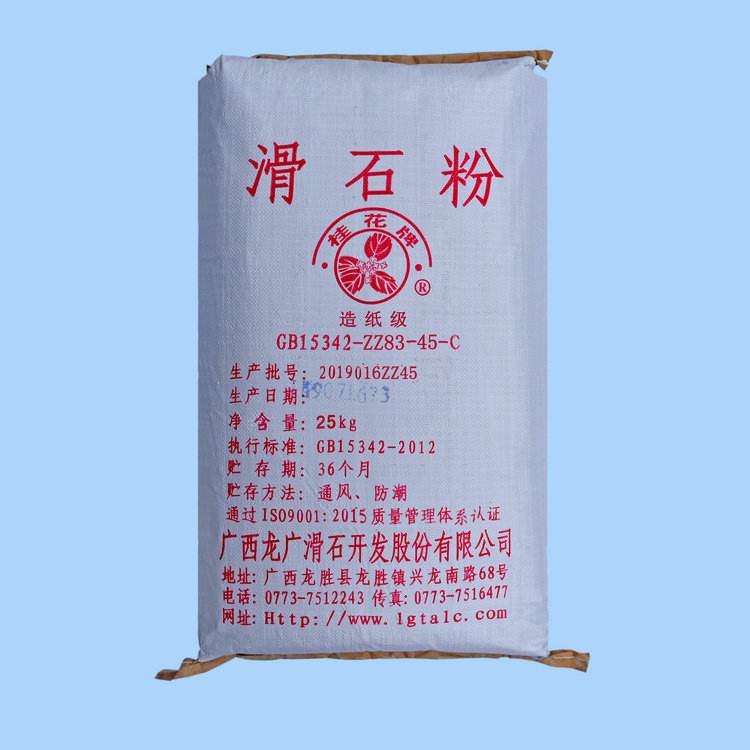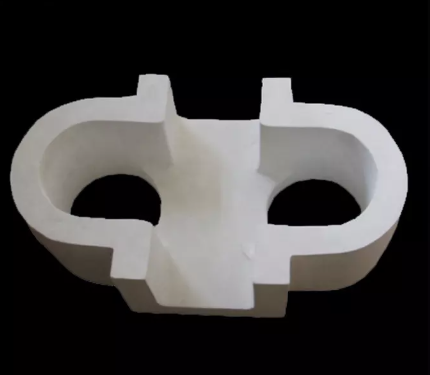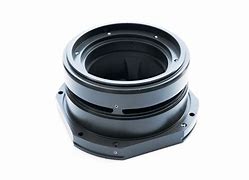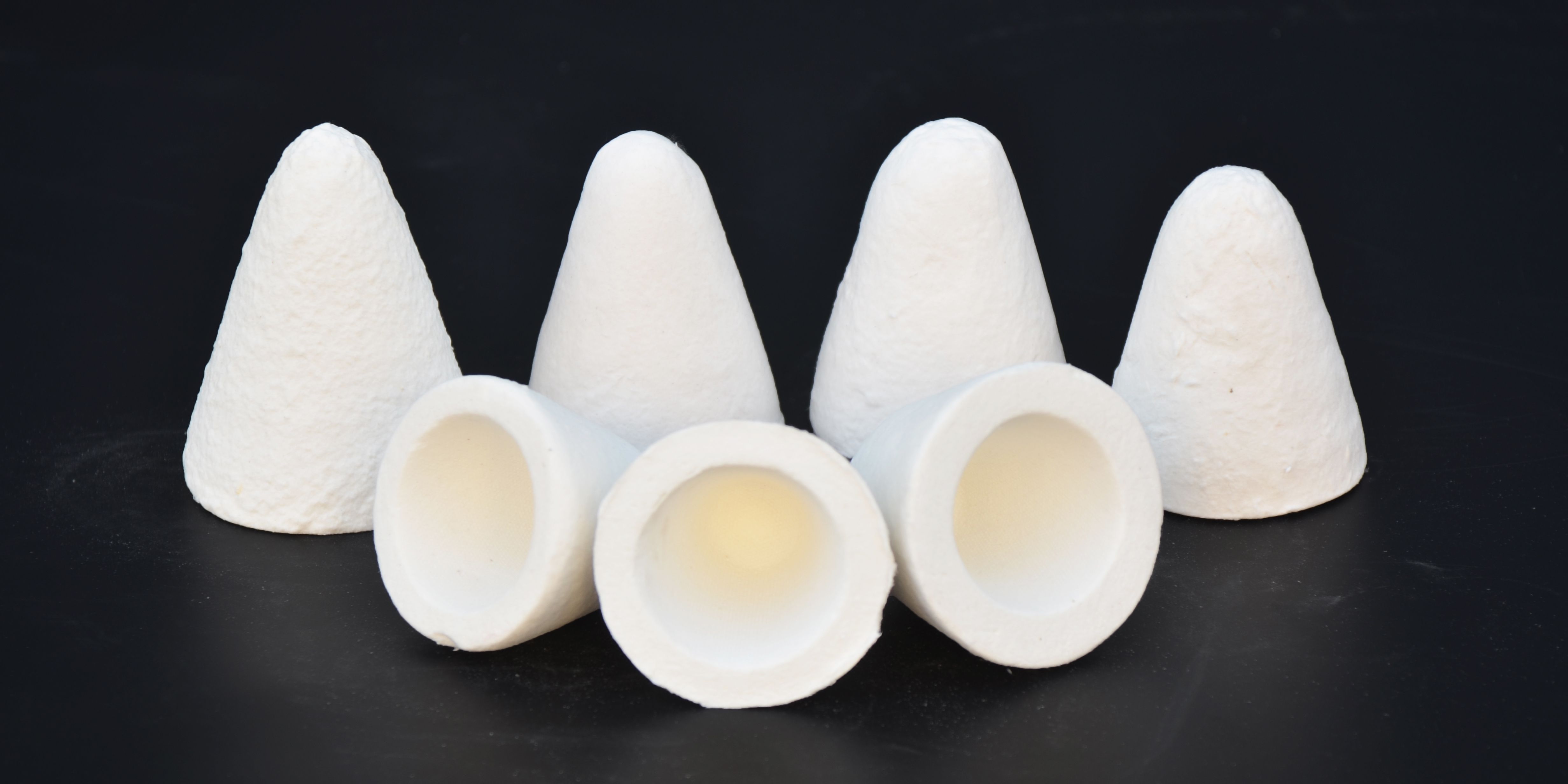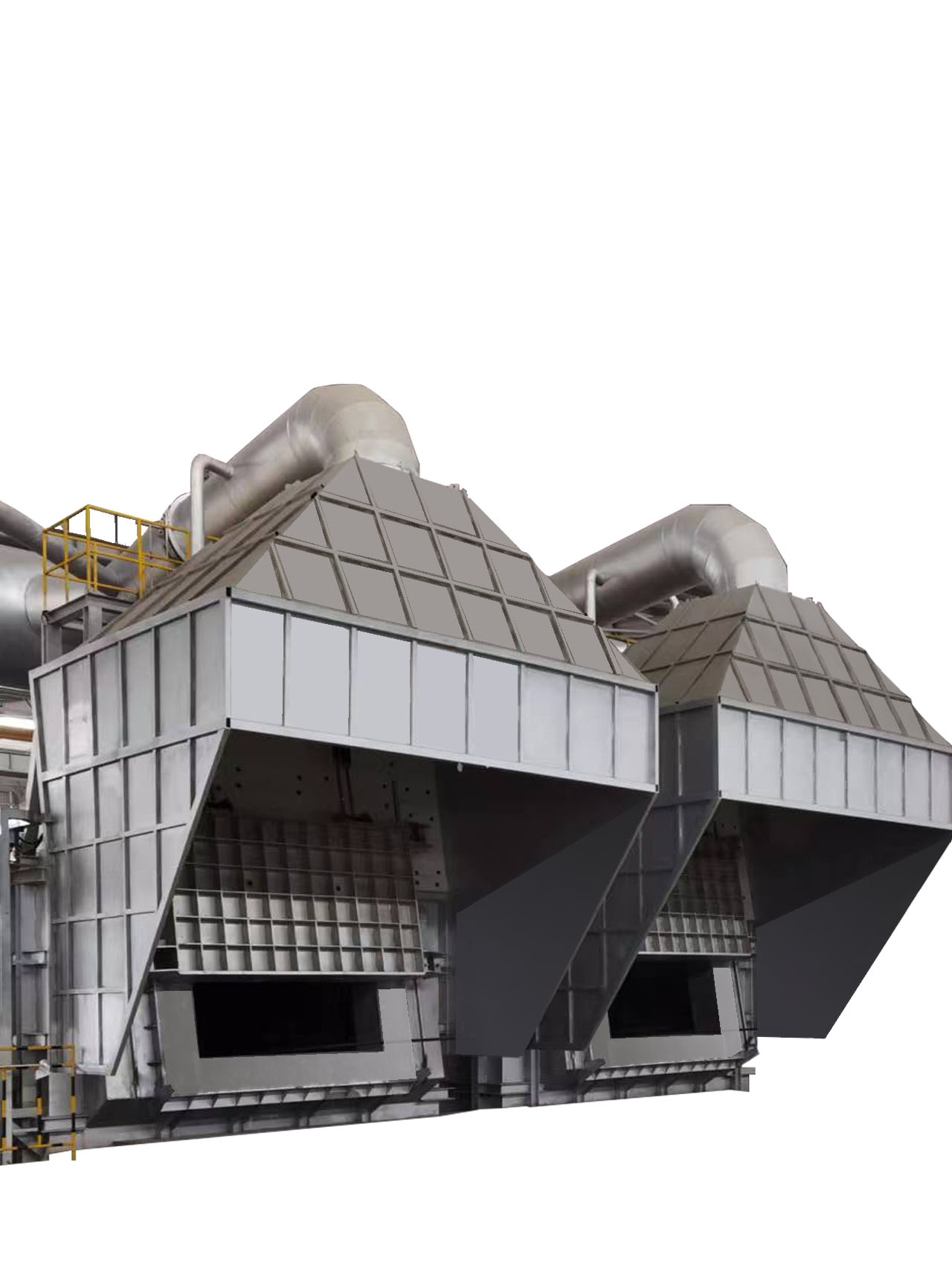(11)Casting: Our factory adopts equal-level close-packed hot-top casting
Standard before casting
1. The talcum powder used when making molds must be smooth and firm;
2. The distribution launder, ceramic launder and pipe must be coated with a thin layer of talcum essence, and no iron should be exposed. The graphite ring and transition plate should be smoothed with a mixture of talcum powder and lard to evenly distribute the channels through which the aluminum liquid passes must be kept clean and dry;
3. The ceramic foam filter plate must be in perfect condition and there is no gap at the junction with the launder. It must be replaced after each casting and bake with fire until dark red;
4. The ingot head must be dried, the casting table must be leveled, the base and the crystallizer must be properly matched, water return is not allowed, and loose the steel wire rope of the starting device;
5. The traction head of ingot is raised to the starting position (the dummy head for rods 50mm and above is 4mm away from the lower end of the graphite ring, and 0~4mm for rods below 150mm);
6. Install the starting gate and check whether the upper and lower shapes of the casting machine are normal;
7. Check the status of the inlet and outlet pumps;
8. Open the drain valve and turn on the cold water tower;
9. Turn on the water pump and adjust the casting water volume;
10. Confirm that water does not enter the traction head of ingot;
11. Prepare enough stopper cone, welding rods, griddle and other corresponding tools and materials;
(12) Casting
1. Open the stopper cone to release the aluminum liquid
2. When the molten aluminum rises to about 20mm from the top of the ceramic launder, lift the gate;
3. Try to shorten the filling time of aluminum liquid as much as possible. When the aluminum liquid fills all the casings, close the drainage valve and open all the water inlet valves. After the filling and holding time is up, lower the casting machine;
4. While the casting machine lowering at the normal casting speed, use the hand to operate the starting device and confirm that the traction head of ingot is descending then stopping;
5. During the casting process, the casting speed, water intake, and aluminum liquid level must be stable. You can refer to the following process parameters:
∮90 billets per minute casting speed: 160~190
∮120 billets per minute casting speed: 140~155
∮154 billets per minute casting speed: 110~120
∮178 billets per minute casting speed: 95~110
above water temperature less than 50℃
6. After the aluminum billet is pulled out of the crystallizer, the casting speed is adjusted according to the surface quality;
7. During the casting process, it is strictly forbidden to add materials or stir the melt into the furnace, and it is strictly forbidden to turn the aluminum liquid in the launder and the distribution launder. The liquid level of the distribution launder must be strictly controlled and stable;
8. Pay attention to monitoring the casting situation. In case of sudden decasting, use aluminum silicate material to stop the crystallizer. If there is a large area of aluminum leakage, the furnace outlet should be blocked immediately, and the aluminum liquid in the crystallizer and filter box should be immediately put into the iron crucible;
9. Plug in the furnace stopper cone before reaching the required length;
10. When all the aluminum liquid leaves the pipe, open the drain valve and use a spatula to clean the aluminum from the pipe mouth and the distribution launder;
11. When all the aluminum rods leave the crystallizer about 300mm, stop falling;
12. Continue to turn on the water for about 2 minutes and then stop the water;
13. Tilt to the casting table, raise the aluminum billet about 1 meter, and use a special spreader to lift the rod;
14. For the lifted ingots, use a colored pen to indicate the smelting number and specifications on the end of each billet, fill in the quality tracking card and submit it to the saw billet;
15. Prepare the casting table as before casting and prepare for the next casting.
(13) Sawing
1. The billet head must be cut to 120~150mm
2. The tail of the billet must be left 80~100mm
3. Saw the short billet length of 0-+5mm
4. When sawing billets, the length must be determined. It is strictly forbidden to have unevenness in the same batch of materials. The length should be controlled within the planned requirement of 0-+10mm.
5. Orders without a specific length will be cut at 6.3 meters;
6. After sawing, it must be rinsed with water, the edges must be cleaned, and the surface must be self-inspected. Unqualified products cannot be used as finished products;
7. The sawed-off billet heads, billet tails, and saw dust should be weighed and stacked separately according to alloy grades and marked;
8. The slope cut of billet head shall not exceed 3 degrees;
9. The curvature of the aluminum billet cannot exceed 3mm;
10. The eccentricity of the aluminum billet shall not exceed 0.5-1mm
(14)Logo
1. Each bundle of ingots has two certificates of conformity attached to the end, one for each end;
2. One end of each aluminum billet is stamped with the melting number, alloy grade and inspection stamp, and the other end is stamped with the factory’s logo and bundled at the same end.
(15) Packaging
1. The aluminum billet must be kept clean and tidy, and the ends must be aligned;
2. After the aluminum billets are sawn, they are packaged uniformly. The packaging method use steel straps way and separate the head and tail. In the ends of the packaging area, the head are sawed 1 meter apart, and the packaging must be tight;
3. The packaged aluminum billets must be stamped with the inspection stamp of the quality inspector before they can be put into storage;
4. The aluminum billets that have been packed into the specific warehouse , marked and arranged neatly.
(16) Precautions
1. All operators must wear the following safety items: safety helmet, face mask, high temperature shoes, high temperature gloves, cloth cap, fabric coveralls cotton socks, etc;
2. All personnel must undergo casting training before they are allowed to work;
3. All refractory materials and tools must be dry;
4. There are enough plugs and plug sticks.
Post time: Oct-14-2023

